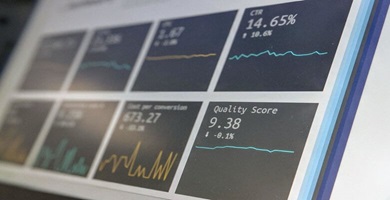Date Published April 4, 2023 - Last Updated February 20, 2024
 Understanding data and its sources, dependencies, and potential dead-ends is crucial for efficient operations. Data lineage can play a pivotal role in achieving that. When trying to solve an incident or problem (often caused by a change) in IT, we tend to look at our data for answers. But if you cannot trust your data, you may find it challenging to get the solution you need. So what can you do?
Understanding data and its sources, dependencies, and potential dead-ends is crucial for efficient operations. Data lineage can play a pivotal role in achieving that. When trying to solve an incident or problem (often caused by a change) in IT, we tend to look at our data for answers. But if you cannot trust your data, you may find it challenging to get the solution you need. So what can you do?
A data-first approach streamlines IT processes and can profoundly impact every aspect of a business. According to a study by McKinsey Global Institute, data-driven organizations are 23 times more likely to acquire customers compared to their competitors.
In this blog post, we'll explore how data lineage assists IT service desk professionals with root-cause and impact analysis and drives better data accuracy, automation, and efficiency.
Data Accuracy at the Core
Many organizations struggle with trusting their data due to varying data hygiene practices, which can hinder accurate reporting and understanding of data architecture. While data accuracy may be an IT goal, it's not always an enterprise-wide priority, making the seemingly simple approach feel complex. This is where data lineage comes in handy.
As we previously discussed, data lineage provides visibility into the life cycle of data, tracking its movement, transformation, and usage from origin to destination. IT professionals can leverage data lineage to gain a comprehensive view of dependencies, enabling them to navigate potential pitfalls when implementing changes. This understanding is vital when implementing changes or performing root-cause analysis.
Automated data lineage software uses a variety of scanners to provide a complete overview of all data flows, sources, transformations, and dependencies. It supports three key areas where data can make a significant difference: automating tasks efficiently, improving business intelligence, and managing cost trends.
Ultimately, focusing on data accuracy and understanding the present landscape paves the way for predicting future outcomes, making it the backbone of your IT team's strategy.
Root cause analysis
One of the most significant benefits of understanding data lineage is the ability to perform root-cause analysis more effectively. IT service desk professionals often face the challenge of tracing issues back to their origins, mainly when dealing with complex data flows and transformations.
Here's how data lineage can help IT service desk professionals with root-cause analysis:
- Visibility: Data lineage provides a clear view of data's journey through an organization's systems, making identifying where issues may have originated easier. This visibility is particularly crucial when dealing with vast amounts of data or complex data flows.
- Error Tracking: By tracking data lineage, you can pinpoint when and where errors were introduced into the data flow. This information can help you quickly identify the cause of data quality issues, making it easier to resolve problems and maintain data accuracy.
- Efficient Issue Resolution: A clear understanding of data lineage helps you resolve issues more efficiently, as you can quickly identify the root cause and implement the necessary fixes. This efficiency not only saves time but also reduces the potential negative impact on business processes.
Impact analysis
Another significant advantage of data lineage is its role in change management impact analysis. This is especially important when modifying data flows, as even minor changes can have substantial repercussions on downstream systems and processes.
Data lineage can facilitate impact analysis in the following ways:
- Change Assessment: Data lineage helps to assess how proposed changes will impact data flows (upstream and downstream dependencies), ensuring minimal disruption to business processes. This knowledge allows you to make informed decisions about whether to move forward with a change or to seek alternative solutions.
- Risk Mitigation: Data lineage can help identify potential risks associated with a proposed change, such as data quality issues, compliance concerns, or process disruptions. By being aware of these risks, you can develop strategies to mitigate them, ensuring a smooth transition.
- Stakeholder Communication: Data lineage can help communicate the potential impacts of a proposed change to stakeholders more effectively. By providing a clear picture of how the change will affect data flows, you can ensure that stakeholders understand the implications and can make informed decisions about whether to approve the change.
Conclusion
Harnessing data lineage leads to more effective root-cause and impact analysis, driving better decision-making and ensuring smoother implementation of changes. Data lineage promotes better data accuracy, efficiency, and automation, allowing your IT team to focus on more strategic initiatives. After all, in today's data-driven environment, the competitive advantage goes to whoever (as a company or person) can leverage data in the best way. And that is only possible if you can trust that your data is accurate, complete, and safe.
Nancy Louisnord is the Global Chief Marketing Officer of MANTA, responsible for the company’s global marketing programs and product marketing strategy. With more than 15 years of international leadership experience in the B2B IT SaaS industry, she is a sought-after presenter at conferences and one of HDI’s TOP 25 Thought Leaders and HDI’s featured contributors. Manta is a world-class data lineage platform that uncovers your blind spots and offers a line of sight into your data environment. By automatically scanning your data environment, Manta builds a powerful map of all data flows, creating full visibility and control of data pipelines. Visit getmanta.com to learn more.